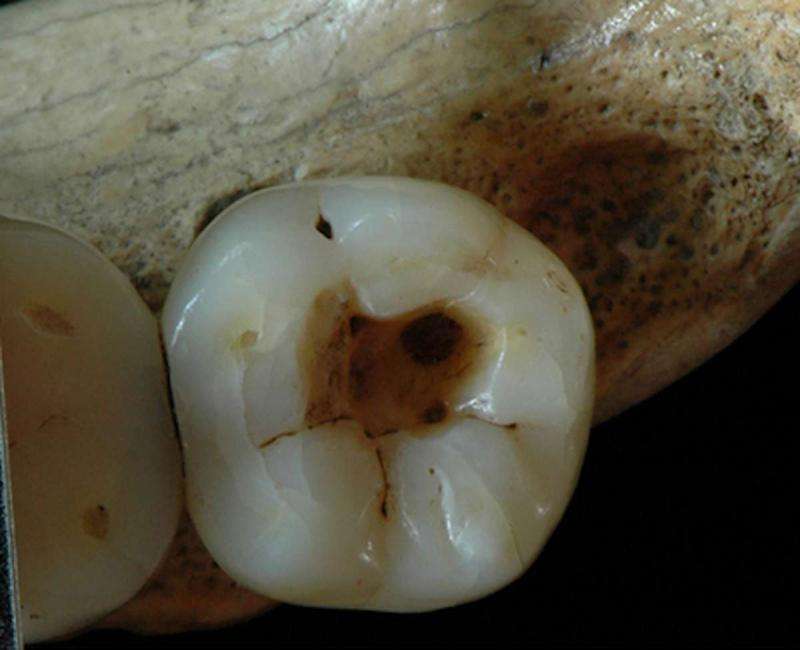July 20, 2015 report
Earliest evidence of dental cavity manipulation found

A large team of researchers with members from institutions in Italy, Germany and Australia has found what they claim is the earliest example of dental cavity manipulation. In their paper published in the journal Scientific Reports, the team describes their work on studying the tooth from a 14,000 year old human skeleton uncovered back 1988, and the techniques they used to show that the marks they found were caused by human intervention.
Cavities occur when parts of teeth decay—in modern times, the fix requires drilling out the decayed matter and filling the resultant hole with a hard material that will stay put preventing further damage or decay. People living during the Late Upper Paleolithic were not so lucky, they had to suffer, or undergo cavity manipulation from a friend using a sharp piece of flint—at least according to the researchers working on the teeth of a skeleton unearthed in Italy over twenty five years ago. No one noticed at the time that a cavity in one tooth appeared to have undergone treatment, or repair. The skeleton was dated back to 13,820 to 14,160 years old and his approximate age at death was placed at 25.
Upon noticing that it appeared that the cavity had been cleaned, the team decided to take a closer look. They studied the surface inside the cavity with an electron microscope—that revealed grooves and ridges that appeared to be caused by scraping. The team then conduced several experiments on teeth that were subjected to rocks, wood and other abrasive material to see if they could replicate the grooves and ridges found in the ancient tooth—marks made by sharpened flint, they found, matched nearly exactly. The evidence suggests that the young man underwent the first found example of corrective dentistry—someone had dug around in his cavity with a sharpened piece of flint attempting to remove the decayed matter and thus, most likely, alleviating a tooth-ache.
The finding predates other examples of known early dentistry, such as a tooth with a beewax filling from approximately 6,500 years ago and evidence of dental drilling that occurred approximately 9,000 years ago. The researchers suggest it marks a major milestone in dental cavity manipulation and shows that early people combined manual dexterity with creative thinking to alleviate suffering due to tooth decay.
More information: Scientific Reports 5, Article number: 12150 DOI: 10.1038/srep12150
© 2015 Phys.org


















